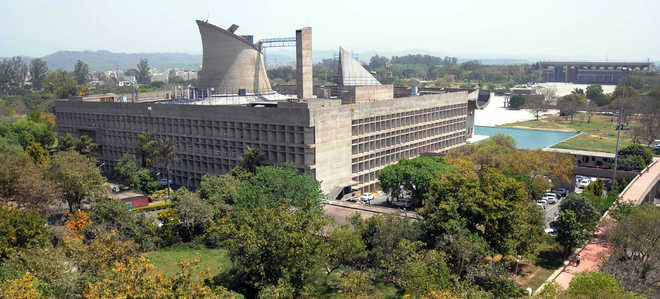Corbusier & Lutyens: A tale of two cities
Maninder Singh
Capital cities of states and countries often have a fascinating history. Every school child in Chandigarh would probably know why and how this city came up, who Le Corbusier was and what role he played, and wherefore.
Spain, which has historically been a union of many crowns and kingdoms, saw its government and king move from Toledo to Madrid, in the 1560s. Before that, the history books in St. John’s High School taught us that in 1461, Queen Isabella I of Aragon married Ferdinand II of Castile, uniting the two jurisdictions. The most remarkable result of the union was the sponsorship, by these visionary monarchs, of the voyage of Columbus under the Spanish flag, across the ocean blue, in 1492. If these two royal personages had not married, Columbus may have lived out his life as an unknown sailor, the New World may have remained ‘undiscovered’ for a while longer and fast forwarding across the centuries, would there still have been Albert Mayer and his Manhattan firm to decide the geographic location of Chandigarh?
There was a royal precept, in days gone by, that the capital is wherever the king or monarch or ruler happens to be. Wherever the monarch sat in kingly or queenly majesty would be considered the seat of government, since all decisions would emanate from that royal seat. When the British moved the capital of India to New Delhi, it was perhaps the need to establish themselves firmly and securely as the successor state to the Mughals in the old fabled capital city of bygone empires.
Before the iconic city of Chandigarh came to be built, the newest city in the sub-continent, from Khyber to the Irrawaddy, was New Delhi, whose first brick was laid in the course of the “medieval” Delhi Durbar of 1911.
The comparison between Edwin Lutyens and Le Corbusier is rather stark. Though, for both of them, these were their greatest projects, Lutyens employed Indian themes and used typical Indian building blocks such as red sandstone. Both of them did take advantage of the natural elevations, such as Raisina Hill, for locating their iconic buildings.
The great Frenchman used the alien Portland cement, a substance that heats and enervates in summer and cools to freezing lows in winter. The red sandstone that built New Delhi’s magnificent structures has aged splendidly. The cement used in the great public buildings in Chandigarh has lost its shine and sheen, making these well-designed structures look faded and jaded. If you look up the Raj Path, from the vantage point of India Gate, there is a grand symmetry. North Block and South Block are mirror images. In Chandigarh, the symmetry is in the shapes and sizes of the sectors.
Lutyens’ architectural style has been described as Indo-Saracenic or Anglo-Saracenic and there were, accordingly, domes, “jaalis”, and Indian motifs such as elephants, stately prancing peacocks, even sculpted cobras atop pillars, and typically Indian floral designs. Le Corbusier was an acknowledged master of modern architecture and seemed fond of boxy buildings, with such concepts as sun-breakers.
While the roads in Chandigarh meet at right angles, in New Delhi, radial avenues radiate as spokes from the giant wheels of roundabouts. Down these roads, Lutyens had traditional Indian fruit trees planted, such as “jamuns”, which would sustain bird populations and even monkeys and langurs, much to the distress of the populace in the last few decades. In Chandigarh, splendid flowering trees such as laburnums and silver oaks, imported from other climes, were planted.
While the British came to the old imperial capital of Delhi to mark the stamp of their imperium, the firm of Mayer, Whittlesey and Glass of New York, whose public face was Albert Mayer, had a chance that few architectural entitles would ever have – the God-given and the Government of India given destiny to locate a new capital city. Commissioning a fixed-wing aircraft, the architects and town planners flew along the Shivaliks from the Yamuna river, near Dehradun, to Pathankot. Flying across three of the five great rivers that made up the old Punjab, the location they came up with was considered baffling.
Taking advantage of the epic state-sponsored project, they overcame the constraints of history and geography by locating the new capital of a first divided, then un-divided, Punjab on a sandy alluvial, non-descript water-deficient mango-dotted stretch between two shallow and seasonally rain-fed streams.
Yet, for all that, it is Chandigarh’s iconic public structures, clustered in the Capitol Complex site, that are today a proud part of the Unesco World Heritage, a legacy of the original creative untutored self-taught architect of French-Swiss extraction, whose image embellishes the ten Swiss-franc paper currency of his country.
(The writer claims to be an old Chandigarh boy)









